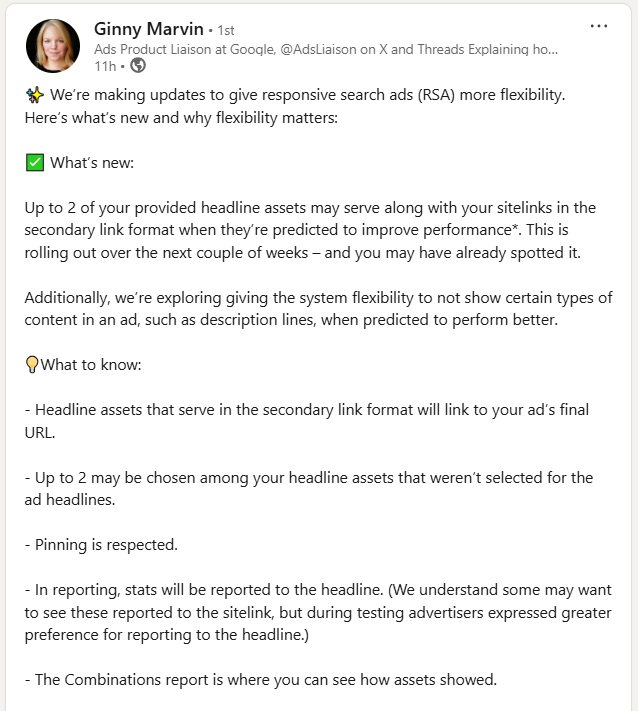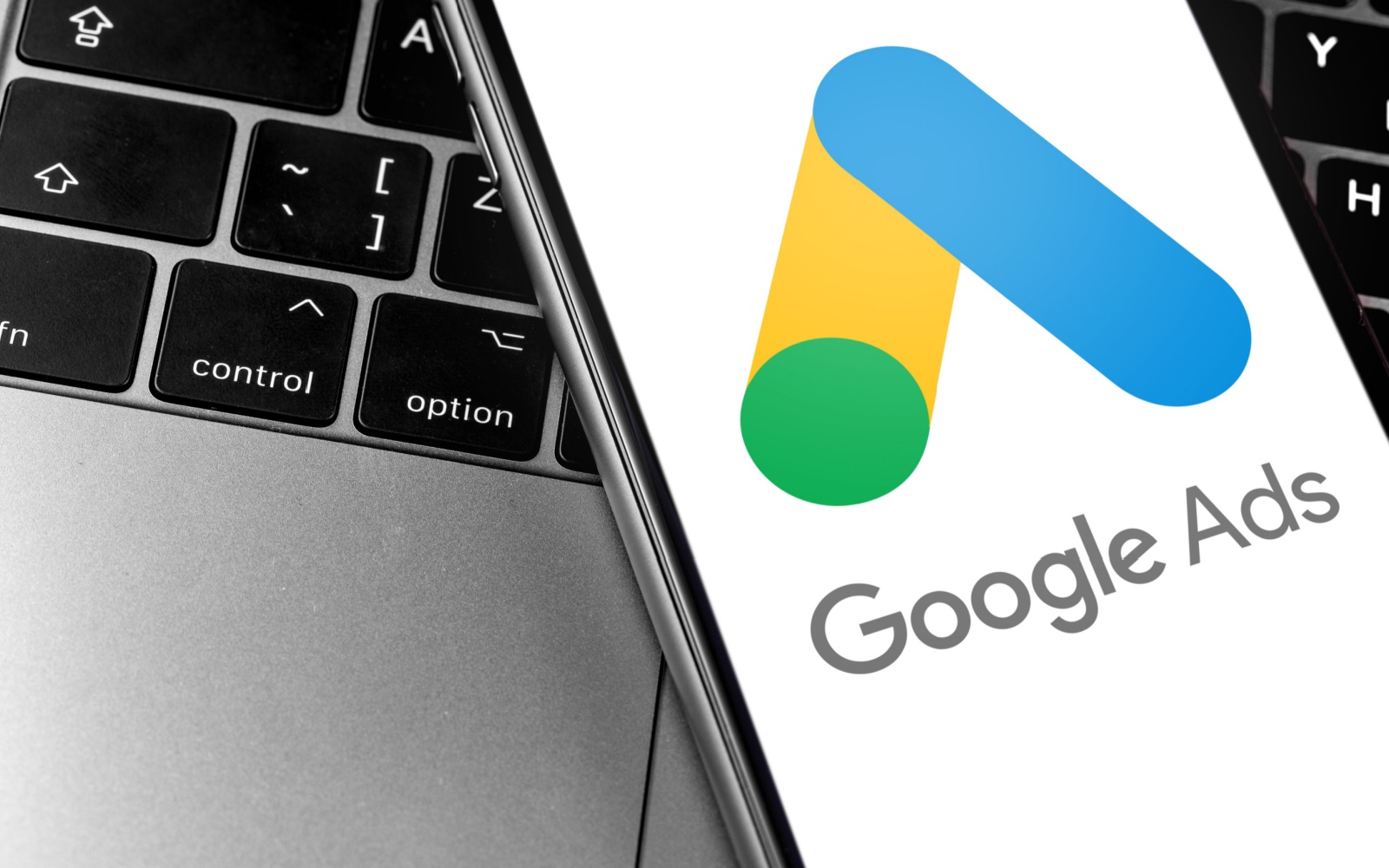Google Ads just rolled out an update to Responsive Search Ads (RSAs), and while it may not seem groundbreaking at first glance, it could have a noticeable impact on how advertisers optimize their campaigns.
This update focuses on how Google assembles ad assets, giving marketers more control over messaging while still leveraging AI-driven automation. If you’ve ever been frustrated with how Google randomly mixes and matches your headlines and descriptions, this change is worth paying attention to.
Here’s what’s changing, why it matters, and how it could impact PPC performance.
What’s Changing With Responsive Search Ads?
In the announcement from Google, there’s one main component of how RSAs are changing.
Before diving into the update, it’s important to note the change that Google implemented last year. In February 2024, Google updated Responsive Search Ads to be able to show only one headline if it was predicted to improve performance.
Now, they’re building off that update with these key aspects.
New Ways To Use Headline Assets
Previously, Google’s approach to Responsive Search Ads was all about maximum automation—headlines and descriptions were combined dynamically, sometimes in ways that didn’t make complete sense.
With this update, Google is adjusting its system to create more cohesive and logical ad combinations.
Starting now, up to two (2) headlines are eligible to serve in previously reserved spaces for sitelinks – if they’re predicted to improve performance.
Below is an example Google provided on what this change could look like:
If a user clicks on any of those allocated headlines, they’ll be directed to the ad’s final URL.
While the specifics of Google’s algorithm tweaks aren’t spelled out, the general goal is clear: ads should make more sense contextually.
Advertisers won’t have to worry as much about disjointed messaging or assets being strung together in ways that feel unnatural to users.
Asset Pinning and Reporting Expectations
Google Ads Liaison Ginny Marvin took to LinkedIn to provide a clear, thought-out update regarding how asset pinning and combination reporting would be affected.

Per Marvin’s post, existing asset pinning will be respected. If headlines are pinned in positions 1 or 2, and if descriptions are pinned in position 1, those will still serve in those dedicated positions.
As for combination reporting, advertisers will still be able to see the most commonly served combination of headlines and descriptions. In this update, it will also show which headlines served as a sitelink.
The stats will be reported at the headline and not the sitelink level, per user feedback in initial testing.
How Does This Impact Advertisers?
This update isn’t just a behind-the-scenes tweak—it has real implications for how advertisers structure their ads and optimize ad performance. Here’s why:
-
More Consistent Messaging = Better Engagement. Disjointed or awkward ad combinations have long been an issue with RSAs. By improving how assets are paired, Google is helping advertisers deliver messages that feel more natural and cohesive, which could lead to higher click-through rates (CTR).
-
Stronger Brand Control. While RSAs are still dynamic, this update reduces the likelihood of brand messaging getting lost in automation. Advertisers can have more confidence that key value propositions and calls to action will appear in logical combinations.
-
Improved Performance Insights. With better visibility into how Google structures ad assets, advertisers can make more informed decisions about which headlines and descriptions to test, adjust, or remove. This leads to more efficient A/B testing and better data-driven optimizations over time.
-
Potential for Higher Quality Scores. If Google’s adjustments result in more relevant ad combinations, it could improve expected CTR, which is a major factor in Quality Score. Higher Quality Scores can lead to lower cost-per-click (CPC) and better ad placements.
Wrapping Up
Google’s update to Responsive Search Ads is a step toward more intelligent automation, helping advertisers maintain better messaging consistency while still benefiting from AI-driven optimizations.
While this won’t eliminate the need for careful asset planning, it does make RSAs a more reliable tool for brands that want to scale their search campaigns efficiently.
If RSAs have frustrated you in the past, now might be the time to revisit them.
With better asset pairing and improved visibility into ad assembly, this update could give advertisers a bit more control—without taking away the automation that makes RSAs so powerful.

